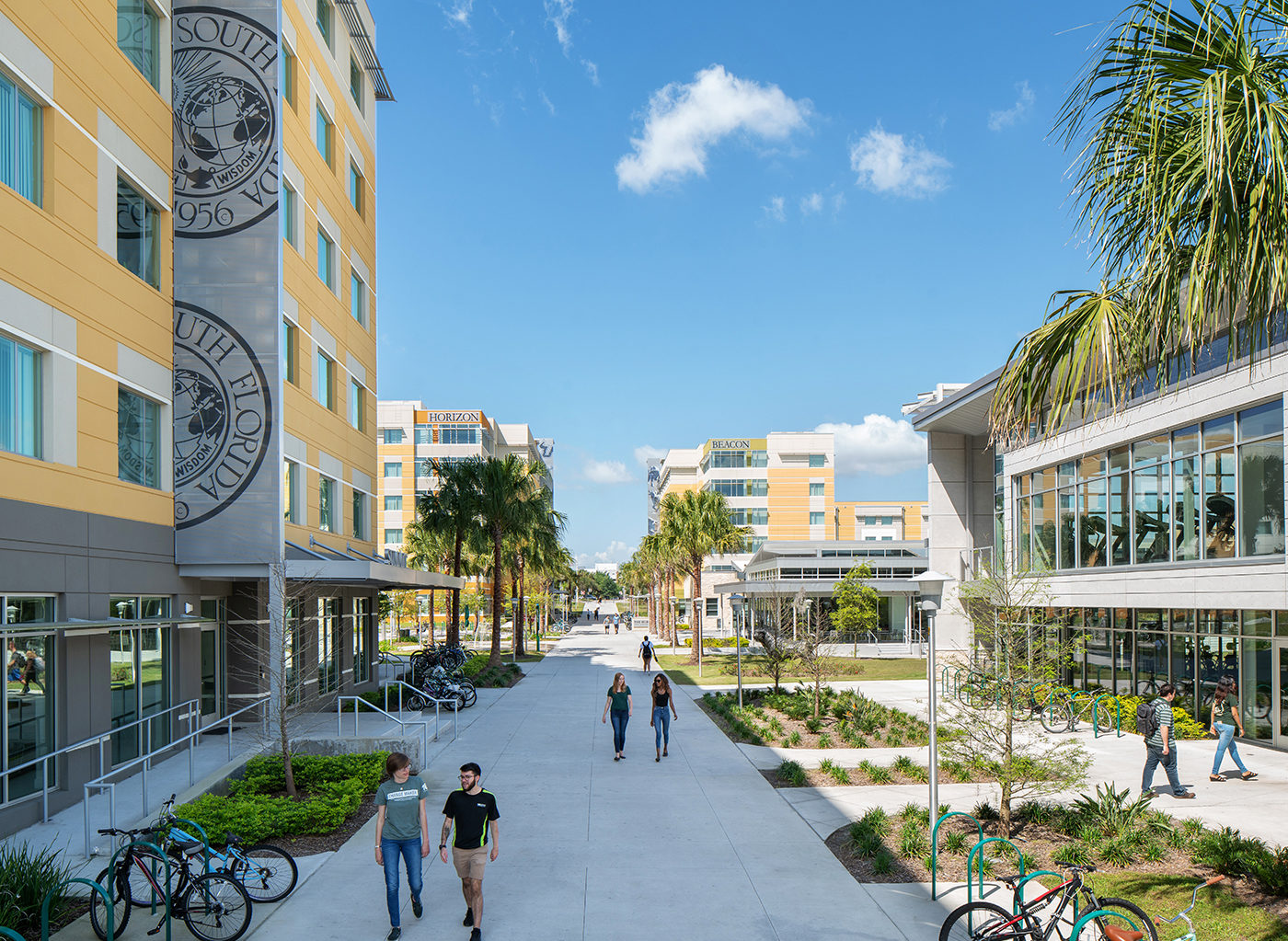Strict move-out process begins for residential students

USF Housing and Residential Education implemented a strictly scheduled move-out process of two-hour time slots for residents who evacuated campus in March and left their belongings in the dorms.
After USF President Steven Currall announced that remote instruction would continue through the end of the spring semester, USF Housing sent an email to all of its residents on March 20 that said, “Please do not return to campus so that we can continue to limit our potential exposure as a community to COVID-19.”
This left many students with questions as to how and when they would be able to retrieve their belongings, as card access to their buildings was disabled after April 6 unless they were approved to continue living on campus.
Gov. Ron DeSantis’ stay-at-home order delayed USF Housing’s original April 8 move-out date until the order was lifted on May 4.
USF Housing then permitted students to return to campus starting May 13 — but only within the two-hour time slot they selected in the Housing Portal.
“Part of the reason that we implemented that [the two-hour time slot] was because we really needed people to, when they were in the building, to be focused on [moving out] and then removing themselves,” said Assistant Vice President of USF Housing Ana Hernandez.
Some students complained about the allotted two hours, claiming that it wasn’t enough time to remove their possessions.
“I feel that the two-hour frame is highly unrealistic, especially when you have to make several trips because you can’t have a cart,” said second-year student Andrew Anderson. “Everyone I know said the same thing. It took me three hours to fully have our car packed and ready to go.”
There are other students who haven’t had a problem moving out within the time frame, albeit with some extra help.
“I moved out today [May 15] from 11-1 and it was fine,” said first-year student Riley O’Neal. “No one working said anything about masks or gloves when you walked in or checked how many people you brought with you. I brought three [people] upstairs with me in Poplar and no one said anything.”
In order to try and enforce the two-hour rule, the students’ card access was turned off and only enabled during their selected time slot, according to Hernandez.
However, students like Anderson who took more than two hours continued to enter the buildings by “tailgating” others who had access.
Hernandez said USF Housing staff is trying to work with students who may need to be accommodated as the process continues, especially with 3,000 residents who still need to complete the move-out process.
“We’re trying to work with them individually, and it really depends on what the specific ask is,” said Hernandez.
Students also feel that the absence of carts usually provided for students to check out when moving in or out is also preventing them from making the given time frame.
Alexis Oralia Esparza, a business advertising student, remained on campus through the rest of the spring semester, and still had trouble with the move-out process, even though she was not limited to two hours to do so.
“Due to the no-cart checkout policy, I know for a fact if I had to follow that two-hour rule I would not have made it,” said Esparaza. “I had two grown men helping alongside me and we still didn’t have my room packed in our cars until after three hours of constant work with little breaks.”
“Carts and bins will not be available so please bring your own, if necessary,” stated a USF Housing email sent prior to the move-out date.
But some students said they don’t see why proper sanitation steps can’t be taken so students can check out carts to assist them with moving out.
“I just don’t understand why they couldn’t have someone wipe [the carts] down considering how few students move out in the time frame,” said Anderson. “I don’t think it’s unrealistic because the grocery stores can do it.”
Decisions regarding the move-out process were made by USF Housing’s Operations and Outreach Division in collaboration with Student Health Services and the College of Public Health, according to Hernandez.
“[The move-out process] is a multistage process that we’re being very intentional about in order to try and mitigate any risk of transmission,” said Hernandez.
“We don’t anticipate that there will be a lot of changes on the student end, but we are constantly assessing the staffing patterns that we set up.”







